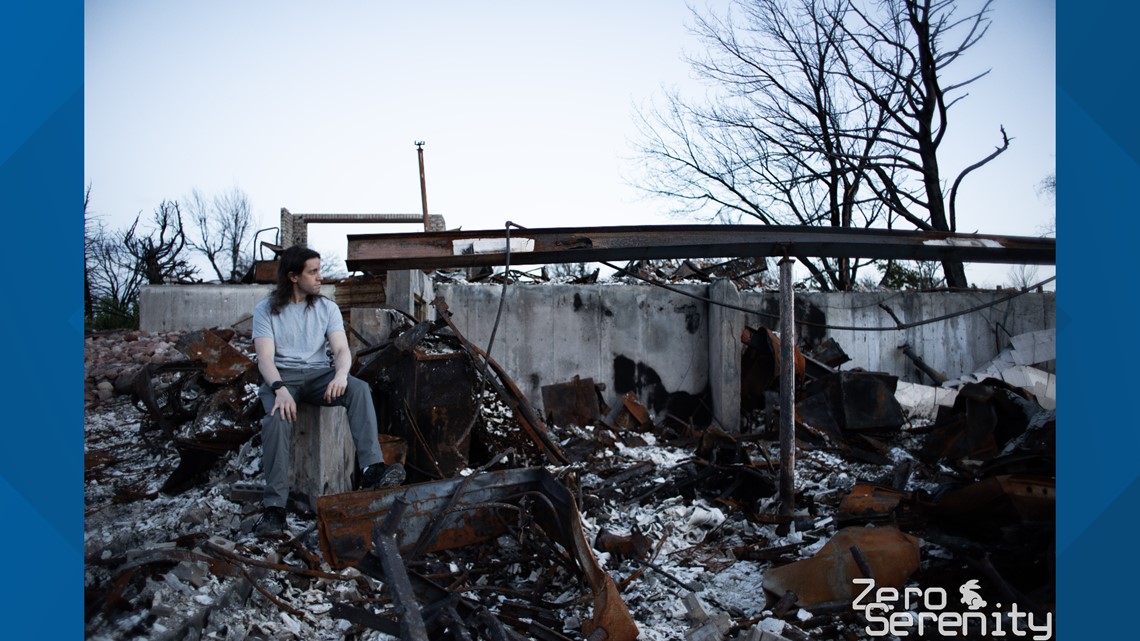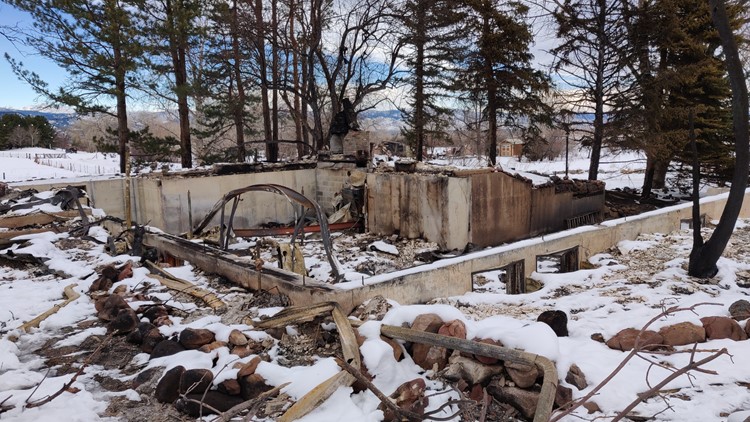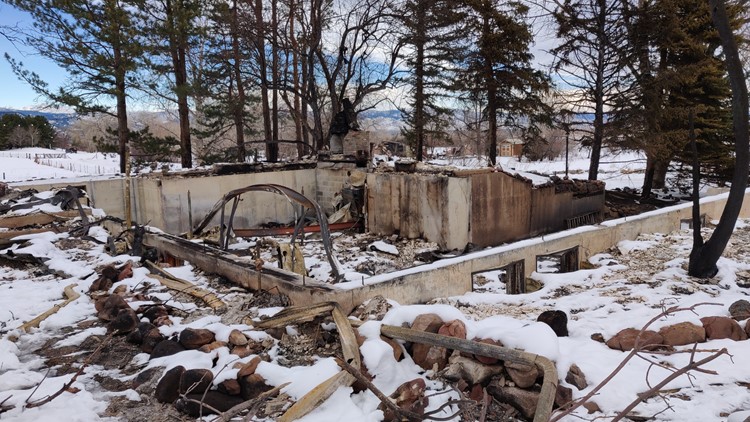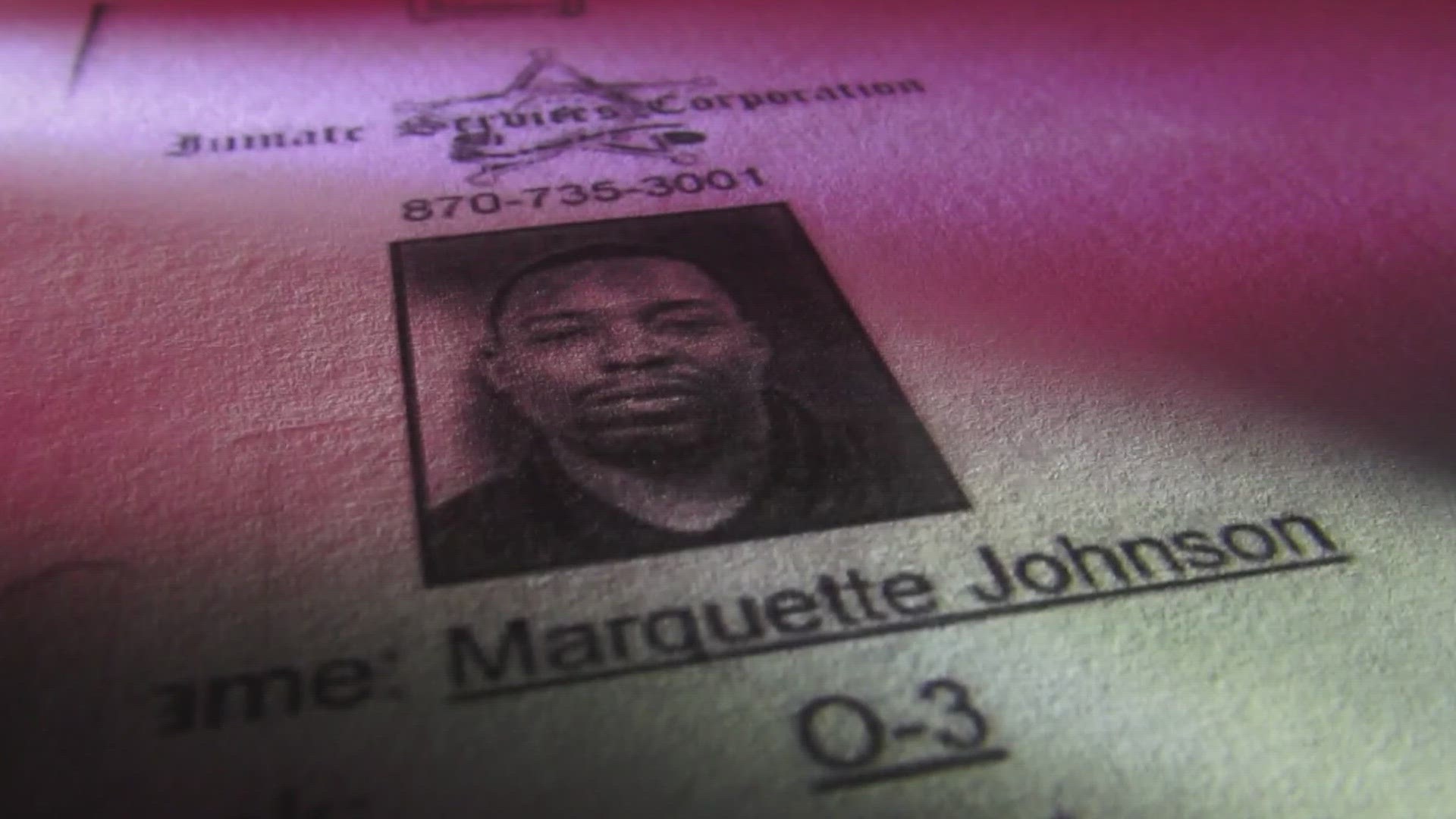BOULDER COUNTY, Colo. — At least $182.9 million in taxpayer money has been spent on recovering from the Marshall Fire that ravaged Boulder County a year ago, 9Wants to Know has learned.
Most of the relief spending so far, at least $134 million, has been for the reconstruction of homes and businesses, 9Wants to Know found through records requests to federal, state and county agencies. The largest sum comes from the Small Business Administration’s allocation of $105 million in loans for both homes and businesses.
On Dec. 30, 2021, the grass fire fueled by high winds killed two people and damaged or destroyed 1,233 properties in Boulder County. The exact cause is not known, but on Wednesday, Boulder County Sheriff Joe Pelle confirmed 9Wants to Know’s reporting that the blaze had multiple ignition points.
Meg Regan’s childhood home just outside Louisville burned in the fire, and she said she’s still trying to pick up the pieces.
She jumped in to coordinate the recovery for her 74-year-old dad, helping her father secure a $200,000 SBA loan to help with the cost of rebuilding his house.
“There were times in the process where we wondered if the hassle was worth the effort,” Regan said. “But we have been sticking with it.”
Graphic created by Zack Newman.
Regan said the system is confusing and that navigating various bureaucracies requires a steep learning curve.
“There's a real chicken-and-egg conundrum with these aid programs, where they want to know the rebuild cost before deciding eligibility, but we were trying to figure out what we could afford to build depending on what aid and how much my dad would qualify for,” she wrote in an email to 9NEWS.
Dona Dalton is a spokesperson for the Recovery Navigator program, which helps Marshall Fire survivors navigate aid programs. She wrote that it is possible to get an adjusted quote as the building process continues.
“It is difficult to get clear pricing for rebuilding ahead of time, and the costs do change. However, if rebuilders keep funders informed, some of the funding streams, like SBA loans, can adjust to changes in construction costs.”
Regan said her father isn’t thrilled to take on more debt but that they view it as a family investment. She wrote that she loved reading on the patio and roaming the fields with her sister. Regan and her husband celebrated their wedding there as the sun set behind the Flatirons.
“I think if it weren’t such a special property, we might not have gone through the whole rebuilding effort in general,” she said.


Since the Marshall Fire, Regan has been trying to move as quickly as possible on rebuilding. They decided to build a small dwelling on the property first, so they can take their time with the rest of the home.
Map above created by Boulder County.
She said the SBA seemed to be willing to work with her family as she gathered all of the necessary documentation but the process has come with hurdles.
“We are now on our fourth case manager with the SBA and depending on our manager that has been easier or harder to get in touch with, which has been difficult when we had questions,” she said. “… Once they approve you, they really want to get it going [by] issuing funds. But, as soon as they issue funds, that interest does start to accrue.”
Mark Randle, a spokesperson with the SBA’s office of disaster assistance, said case manager changes might happen if one case manager has more availability than another.
“The idea is to process [requests] as quickly as possible by someone who’s available instead of waiting,” he said. “In a grocery store, if the line is available to the right, you go to the right.”
He said people can request to speak to a supervisor if case managers aren’t doing what they should be and that applicants can request a delay in receiving the money.
Regan said it has been difficult to understand the intricacies and demands of each agency’s recovery program.
“It’s hard,” she said. “There are times where I’m not even sure if I fully understand it. But if you keep moving forward, I guess there’s a faith that things will kind of work out and that you can deal with any problems as they come up.”
Regan family home before and after the Marshall Fire destroyed it.
Dalton, with the Recovery Navigator program, wrote that she recommended that people connect with the organization – and also community newsletters and social media pages – to identify what funding is available and their deadlines. She wrote that rebuilding funds are “primarily” tied to disparities between insurance and recovery costs.
Debris cleanup is a crucial step to rebuilding and requires a hefty cost. At least $35 million has been spent through state and federal agency contracts, according to spending data analyzed by 9Wants to Know.
Regan wrote in an email that they opted to go with a private debris removal company to be able to act on their own timeline but that doing so required getting multiple quotes and seeing whether neighbors wanted to pool funds. She wrote that the logistics were overwhelming among so much loss.
‘I felt lost’
Chris Gorman lived in Louisville for seven years before the Marshall Fire and said he only had what was in his car after the fire destroyed the basement apartment he was renting.
“I felt lost,” he said. “It’s not the kind of thing where you can just call up someone you know who’s been through this before because I didn’t know anybody who has. Trying to feel around and figure out what to do from there was very challenging.”
He said he had trouble accessing aid as a renter.


“Being a renter versus an owner did make resources pretty limited,” he said. “Both insurance and aid dollars were significantly more readily available depending on who you were. Depending on your situation.”
Dalton wrote that renters have faced numerous challenges including the loss of property and rent increases and might have struggled to get money for smoke damage repair.
“There may be a perception in the community that Recovery Navigation is for homeowners only, but renters can access many of the same resources as homeowners, with the exception of rebuilding funds,” Dalton wrote.
She wrote that renters should create a recovery plan with the organization. Dalton wrote that resources include “insurance consultations, personal finance consultations, and referrals to programs.”
Gorman said he was able to get a SBA loan but was restricted to what the funds could be used toward. The money could be used to replace destroyed things, not to pay for a mortgage.
9Wants to Know confirmed the loan amount through SBA documents provided by both Gorman and Regan.
“Disaster loans up to $200,000 are available to homeowners to repair or replace damaged or destroyed real estate,” wrote Richard Jenkins in a SBA news release. “Homeowners and renters are eligible for up to $40,000 to repair or replace damaged or destroyed personal property.”
Gorman was able to cobble together savings, gifts and aid to buy a home in Thornton. A year later, he feels better.
“I don’t feel so lost,” he said. “Instead of feeling so much like a leaf in the wind, I’m starting to be the actual tree. ”
The mental health aspect of recovery
A year later, the toll of the fire on residents’ mental health continues to be felt.
Gorman said he had a diagnosis of autism and post-traumatic stress disorder before the Marshall Fire. He said trying to piece everything together on top of those mental struggles was hard.
“But now it’s been worse,” he said. “And trying to get up everyday to just keep going at it – for the longest time that’s been the most difficult part of the whole thing.”
He said wind storms and wildfires in Boulder County heighten his stress every time one is forecasted or happens. He said he increased the frequency he sees his therapist and encouraged others to do the same.
“Don’t think you can fight this on your own,” he said.
9Wants to Know has found at least $765,000 has been spent on mental health initiatives such as Boulder County Crisis Counseling conducted by Jewish Family Service Of Colorado. According to the program’s website, counseling is available until July 31, 2023 or until funding runs out.
Dalton, the spokesperson for the Recovery Navigators, recommended survivors utilize resources including:
See a summary of programs and deadlines on the Boulder County website:
Marshall Fire and Wind Event Recovery - Boulder County: https://bouldercounty.gov/disasters/wildfires/marshall/
For rebuilding, see the DOLA Housing Recovery Program: https://cdola.colorado.gov/housing-recovery-program
See list of forms to apply for Community Foundation / Housing Recovery Program: Rebuild - Community Economic Defense Project (cedproject.org): https://cedproject.org/rebuild/
Reach investigative reporter Zack Newman through his phone at 303-548-9044. You can also call or text securely on Signal through that same number. Email: zack.newman@9news.com. Call or text is preferred over email.
SUGGESTED VIDEOS: Marshall Fire Coverage







